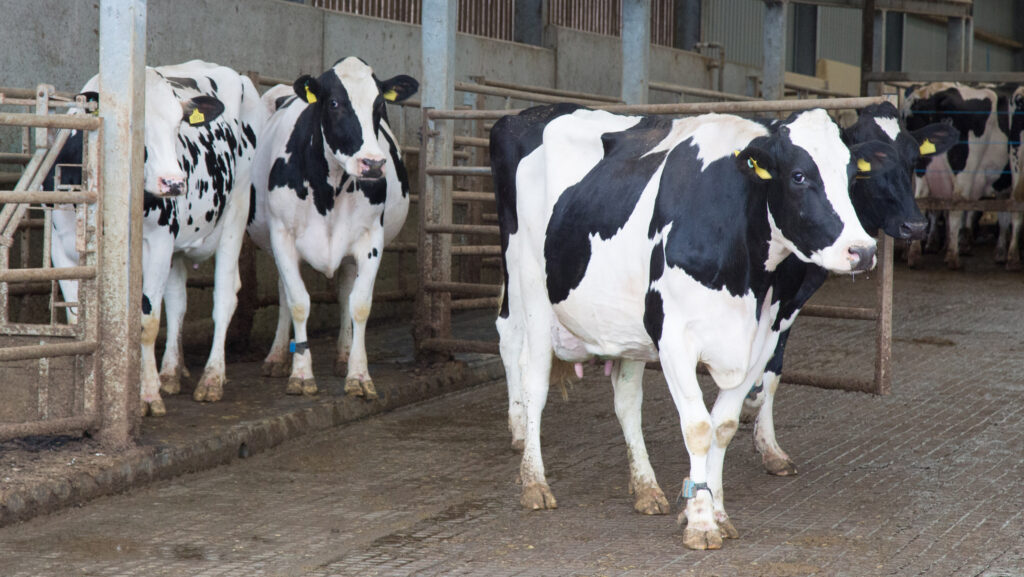When are the best times to condition-score the dairy herd?
 © Tim Scrivener
© Tim Scrivener Body condition scoring the whole herd at two key stages in lactation will repay the time and effort it takes only if the results are reviewed and used to change management.
Analysing scores with the farm’s vet and nutritionist will identify the outliers or flag up group trends, says vet James Marsden of Shropshire Farm Vets.
Changes in bodyweight can then be linked with any decline in performance: a fall in conception rate, more displaced abomasums, or a higher incidence of lameness and metabolic disease.
See also: How three dairy farmers maintain high-yielding herds
But discussing the results with both advisers ensures they agree on appropriate advice, he adds.
James says the aim of regularly scoring cow condition is to follow changes over time and look at group dynamics.
“Is the milking herd losing or gaining weight?” he asks. The goal is to prevent extremes of weight gain and loss and, therefore, poor health.
“As a useful management tool, the key thing is to get in front of problems and make sure that individual cows are not too thin – or too fat – as thin cows could be lame, have a poor immune system and are more likely to be cystic,” he explains.
Herd-level intervention
Where 10-20% of the herd falls outside target scores, James says this requires intervention at herd level, reviewing diet, housing and health.
It can happen when forage shortages affect the diet, or excellent maize is paired with sub-standard grass silage and cows get fat, he explains.
Ideally, the herd is scored 60 to 100 days after calving and again 84 days before drying off.
“Three weeks post calving, you may see a major drop in condition score; by 60 to 100 days, the cow should be stable,” he says. “Scoring at this point, you can pick up cows losing excess condition.”
Although the goal is always for individual cows to lose no more than 0.5 of a score after calving, James points out that scoring needs to be considered alongside genetics and yield.
Animals have a “genetic” body condition score: a Holstein, for instance, will typically hit rock bottom at 2.25 post-calving, although this level is going to increase as herds genetically select for fitter cows, he adds.
Fat mobilisation is also accentuated in very high-yielding (12,000 to 14,000 litres) Holsteins.
These cows can become fat very quickly in late lactation when they are not producing enough milk from their dietary intakes.
Another factor in changing bodyweight, says James, is that as cows enter their third to fifth lactation, they are reaching their production peak, and the risk of them becoming fatter is greater.
Slow and steady adjustment
The aim should be a static condition through the dry period.
It is possible to score cows at drying off “and, in the first half of the dry period, you can try to trim them off with a low-energy, dense ration”.
However, to avoid a problem at drying off, it is better to score cows in late lactation – 84 days pre-drying off.
“You can change a cow’s condition score slowly by moving groups, manipulating the ration, removing concentrates from the parlour, or changing protein or starch content in the ration at the barrier,” says James.
“Very thin cows can be dried off early, so they are not burning energy for milk; very fat cows can also be dried off and put on straw to lose weight.
“You can also feed more protein and less energy to reduce calorie intake, yet still support milk production.”
